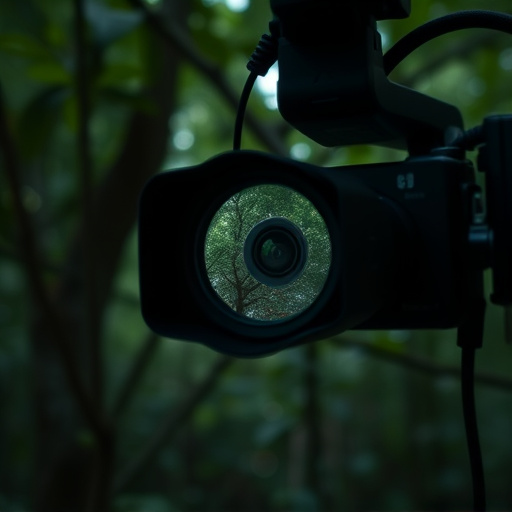Before installing a covert camera network for enhanced home security, understand local laws and ethical considerations. Strategically place hidden cameras in key areas like entrances, windows, and common spaces for comprehensive surveillance while respecting privacy. Regular maintenance, cyber threat protections, and adherence to legal guidelines are crucial for an effective and secure system.
Discover the art of enhancing your home security with a covert camera network. This comprehensive guide explores the best practices for installation, from strategic placement of hidden cameras to ensuring seamless network integration. Learn how to leverage technology effectively while navigating legal implications. Identify optimal locations to maximize surveillance, maintain system integrity, and safeguard your peace of mind. Elevate your home’s defense with these essential insights into best hidden camera locations for robust home security.
- Understanding the Purpose and Legal Implications of Covert Camera Networks
- Identifying Optimal Hidden Camera Locations for Enhanced Home Security
- Ensuring Effective Network Integration and Maintenance for Continuous Surveillance
Understanding the Purpose and Legal Implications of Covert Camera Networks
Understanding the purpose and legal implications of covert camera networks is paramount before installation. These systems, designed to enhance home security by monitoring activities in hidden locations, must be deployed ethically and legally. The best hidden camera locations within a residence should focus on entry points, valuable asset areas, and potential safety hazards. However, it’s crucial to respect privacy rights and comply with local laws. Many jurisdictions have regulations governing the use of surveillance technology, including restrictions on recording certain areas or activities. Homeowners must ensure they are aware of these rules to avoid legal repercussions and maintain the integrity of their security system.
Knowing the legal implications involves understanding consent requirements, privacy expectations, and data protection measures. Installing covert cameras without proper authorization can lead to severe consequences, including fines and damage to one’s reputation. It’s essential to consult with legal experts or professionals specializing in home security to ensure the network aligns with both security needs and legal obligations. This approach safeguards not only against potential security threats but also ensures the system operates within a lawful framework.
Identifying Optimal Hidden Camera Locations for Enhanced Home Security
When it comes to enhancing home security through a covert camera network, strategic placement is key. The best hidden camera locations in and around your property offer unseen yet comprehensive coverage. Consider areas that are out of plain sight but still capture crucial zones like entry points, valuable asset areas, and common gathering spots. Surreptitiously installing cameras near windows, doors, and corners can provide a multi-angled view, deterring potential intruders.
Optimal placement also involves understanding your home’s layout and identifying blind spots. Utilize strategic positioning to ensure camera views are unobstructed by furniture or decor, allowing for clear, detailed footage. Additionally, consider the lighting in these areas; well-lit locations may reduce the need for artificial illumination on cameras. By selecting the best hidden camera locations thoughtfully, you create an invisible security network that significantly bolsters your home’s protection.
Ensuring Effective Network Integration and Maintenance for Continuous Surveillance
To ensure effective network integration and maintenance for continuous surveillance, it’s crucial to strategically place hidden cameras in best hidden camera locations around your home. Consider high-traffic areas like entrances, windows, and common gathering spots as primary surveillance points. Wireless or wired cameras can be seamlessly integrated into your existing home security system, allowing for centralized control and real-time monitoring via a secure network. Regular maintenance checks are equally vital to keep the system functioning optimally. This includes testing camera views, verifying data transmission, and ensuring power supply reliability, especially in remote locations. Staying proactive with updates and patches also fortifies security against potential cyber threats, preserving the integrity of your covert camera network.
Installing a covert camera network is a powerful way to enhance home security, but it requires careful consideration of legal boundaries and optimal placement. By understanding the best hidden camera locations, integrating a robust network, and maintaining efficient surveillance, homeowners can create a comprehensive security system that discourages intruders while respecting privacy. These practices ensure peace of mind and contribute to a safer living environment.
